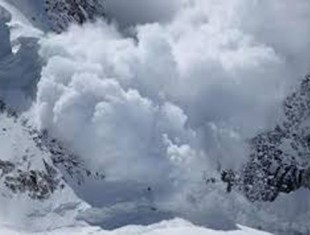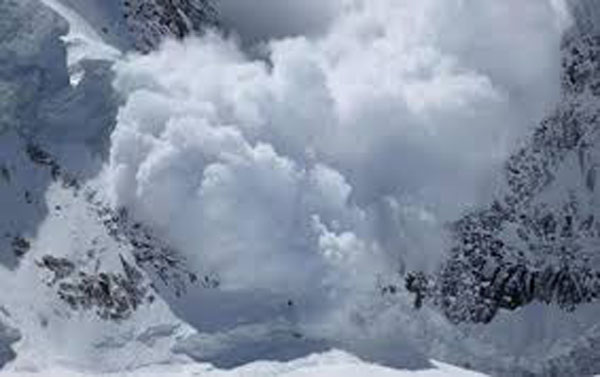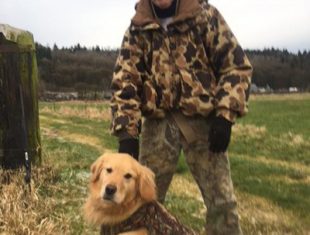MT. EVEREST
By Charlie Hoke
Special to the sportspaper.org
Editor’s note: Hoke, who lives in Florida and is brother to Bill Hoke, who frequently writes for this Web Site and is a hiker, is responding to the deadly avalanche on Friday (April 18) that claimed the lives of 13 Sherpas (three other guides are missing). It was inevitable. This is one of the most dangerous places on Earth. Expect more.
The season is barely underway.
My first thought was that the 5,300 climbers who have ascended Everest — and thousands more who did not make it to the top ‑ should sit down today to write big checks to the surviving Sherpa widows whose children will now not go to school; that there is no father to pay tuition. This is a small country and these men come from small villages where their loss will ripple for generations.
I suspect thousand more of us, climbers and not, will join in to send a contribution, a reparation to their sacrifice. We bait them into harm’s way; surely the climbers, the climbers’ community, can do better.
Every single person who climbs Everest owes a debt to the Sherpas, for fixing ropes, traversing the ice fall, making dozens of trips, setting belays and sometimes short-roping inexperienced climbers bottom to top.
For a paying client, this South Col route is the most accessible, the easiest and the only way so many can take on this mountain. There is no other way for most of them, so they gather in hundreds of tents, sit and acclimatize for
April and May and then, a hundred, or a thousand of them, poised for the few good weather days in May, climb the ropes set by Sherpas, breathe the bottled oxygen carried to 26,000 feet for them, and get set to push and shove their way to the top.
One in 20 may die ‑some standing in line – and many taking the falls are the Sherpas.
Climbers will minimize their time in the ice fall while Sherpas will work there.
They do the heavy lifting, repeatedly going back and forth through the ice fall, provisioning high camps, carrying tons of supplies, high pressure bottles of supplemental oxygen, preparing the hot tea pushed into climber’s
tents at 1 a.m. and, increasingly, carrying down the detritus of high altitude climbing where nothing disintegrates.
The route to the stop is literally strewn with frozen corpses, freezing to brittle and then limbs and heads breaking off, no time to say hello, goodbye, climbers climb on, step over the bodies and now huddle, slowly freezing in tight line-ups standing and shuffling by the hour high into the death zone, hoping for a break, that the line in front of them moves and always their chance to ‘summit’.
Can anything be more selfish?
They stand in line below the Hillary Step tucked into a knife-edge ridge, straddling 7,000 feet above the glaciers, hoping the weather will hold, the line will begin moving and then, later, standing in line to down-climb, hoping frost bite does not take its toll, hoping their bottled oxygen lasts, looking up, trying to ignore the fearsome wind, the mind numbing cold.
Death calls often here. Don’t tarry. No one can rescue you here, not even a Sherpa.
For some, this may be their first real mountain climb and their inexperience may be waiting to kill them, a Sherpa at their elbow, risking their lives over and over, season after season.
But they keep coming.
Every single person who laces up their climbing boots knows there are risks. Do this long enough and you will encounter an injury or a body bag at trailside, waiting for a helicopter.
In three consecutive trips to climbMt. Rainier, we ran into recovery helicopters, in the parking lot at Paradise, thumping over us on Disappointment Cleaver, and carrying bodies (again) off Liberty Ridge. It happens.
This all changes when someone takes on the risks for you, so you can stand at the summit and hold up a flag, leave a keep-sake for wife or child, Sherpas urging you to get up and get down quickly, pleading with you not to
linger on top, often vainly unable to get you to turn back when every experience they have knows you are flirting with death, a stupid defiance brought on by the lack of oxygen, the cold, the extreme altitude, the wind,
and the big investment made in training, travel, fees and time.
The inexperienced keep coming and over and over and Sherpas teach rudimentary mountain climbing skills on the highest and most inhospitable place on Earth.
There is no test for competency; the only means test is the ability to pay.
This won’t end. This season is likely to see more brightly colored down suits, curled into the snow, tied off on a wall of ice, at the bottom of a crevasse, taking a last helpless breath in a tent, the edema brothers lurking in the body and with no way down some will gurgle themselves to death weathered down in a thin tent tied to an ice wall in a five-day blizzard with hurricane winds at 30 below.
It’s not fair up there. It’s indiscriminate and the mountain has a dozen ways to kill you or maim you or give you such an up-close look at death you don’t care if you ever clip into a rope again.
But they keep on coming, drawn to the highest mountain on Earth, money buying the access that formerly only came with hard-earned high mountain experience.
We lose our best friends, wives, husbands, children, bothers and sisters up there and we keep going back, surely not to die, but if we are not constantly aware of the risks to ourselves and ‑ on Everest and other big mountains ‑ the risk others are talking so we can buy our dreams, then we are foolish and very, very selfish.
I suspect right now, on a trail down from Everest Base camp, there are small groups of climbers who have seen this too up close and personal and are retreating, not wishing to have any blood from the ice fall on their hands.
Others will calculate, determine it won’t be them carried down to a widow wondering how she is going to survive, how her children will be able to attend school, or flown back across to the world for the same questions climbing spouses ask.
And climbers will go up, and if they are not completely aware of the risks they may stand, momentarily, in the pop corn field and look at the cascading seracs and crevasses and weak snow bridges, and wonder about climbing those fixed ropes and swaying ladders and say a small prayer for those up in front of them and press on ‑ quickly.
They’ll keep on coming ‑ the mountain too big, too much of a challenge to ignore ‑ a money pot for Nepal and they will continue to die, climbers pursing a city-dream, Sherpas making a living.
This was a season opener, this avalanche that killed 13 and left three others missing. One bad storm on one of those clear May days and this huge catastrophe may be overshadowed by dozens — or more — dying in the death zone.
Every time I go to a mountain or get on a trail, I try to remind myself that in just a few hours I have crossed over into a place where the safety of our normal lives is past us, where small mistakes have huge, sometimes life alternating consequences and where as elemental as it may be, when we take on mother nature, we take on fire and ice, snow and wind and cold that can freeze you solid.
Me?
I’m going to wait for the name of a reputable relief agency for these lost Sherpas and send a contribution; every climber should think about doing the same.
And, I hope I will continue to put first the maxim told us in the mountaineer’s climbing class: “Do not let judgment be overcome by desire.”



